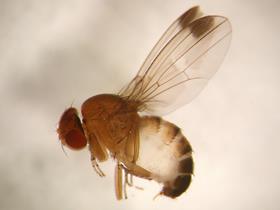
Europe has stepped up its attempts to understand the non-native Spotted Wing Drosophila (SWD) fruit fly with a new £48 million international research project.
The project, named DROPSA, will be led by the Food and Environment Research Agency (Fera) and combine work from 25 other national and international partners, including experts from Europe, North America, New Zealand, China and Japan.
It will investigate ways to combat the threat to fruit crops from SWD, as well as several other pathogens that cause bacterial speck and leaf spot.
A Fera statement said that these particular threats are creating a “significant challenge” to the European fruit industries and require preventative strategies to reduce risk.
DROPSA will investigate how SWD and the other pathogens can be introduced and spread. This information will then be used to develop preventative strategies and recommendations to prevent further spreading.
“This innovative project brings together the very best expertise in integrated pest management of fruit pests and diseases,” said Neil Audsley, insect endocrinologist at Fera, and project leader. “Working together, we are confident that the project will lead to ground-breaking solutions to minimise and prevent damage to fruit crops.
“The knowledge and information gained will be used to provide practical, cost-effective and sustainable solutions that can be widely implemented by the EU fruit industry.”
The news comes as earlier this year trade body British Summer Fruits warned soft-fruit growers to be particularly vigiliant when looking for SWD, following the UK's mild winter.
Laurence Olins, chairman of British Summer Fruits, said that strawberries, everbearers, and the 60-day crop usually planted in February, will be most susceptible this year as their ripening period, during mid to late July, coincides with the lifestyle of SWD.
Last year, a cross-industry monitoring programme found a total of 24 SWD flies on fruit farms in the UK. The fly, which originates in Asia, poses a threat to commercial crop production as it is able to pierce the skin of fruit ready for sale, rather than only targeting overripe fruit.
SWD looks similar to the common fruit fly but males can be identified by a large spot on the front of each wing. The female can be recognised by a serrated edge on her body, used for penetrating fruit.






No comments yet